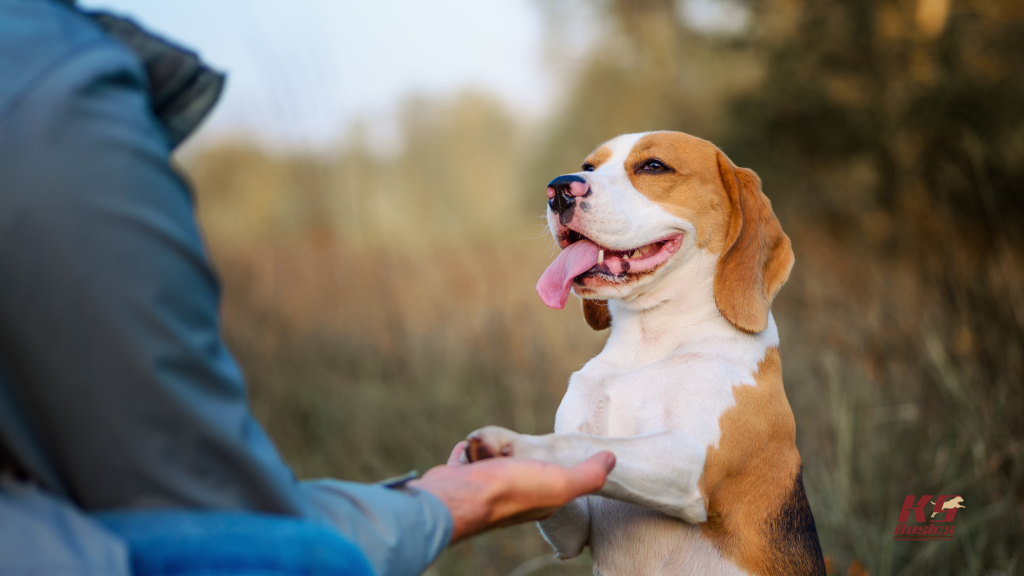The Importance of Positive Reinforcement in Dog Training

Understanding Positive Reinforcement in Dog Training
When it comes to training dogs, one thing stands out: the effectiveness of positive reinforcement. This method encourages desired behaviors through rewards, making learning a more enjoyable experience for both dogs and their owners. From obedience commands to complex tricks, positive reinforcement can be employed in various training scenarios, fostering an enriching environment for canine companions.
Why should dog owners consider this approach? Here are some compelling reasons:
- Builds Trust: Positive reinforcement creates a bond between the dog and owner. When a dog receives praise or a treat for performing well, it begins to associate the owner with positive experiences. This builds a foundation of trust, which is crucial for effective training.
- Promotes Confidence: Dogs trained with rewards are less anxious and more self-assured. For instance, a shy dog that learns to navigate the world through rewards is likely to develop a greater sense of security and comfort in various situations, whether it’s meeting new people or exploring unfamiliar environments.
- Enhances Learning: Dogs are more likely to remember commands and tricks taught with positive reinforcement. Research indicates that animals respond better to reward-based systems than to punitive measures. For example, using a clicker to mark desired behavior followed by a tasty treat significantly increases the likelihood of that behavior being repeated.
By focusing on positive behaviors, owners foster an environment of encouragement. This not only leads to successful training but also nurtures a happy, well-adjusted pet. In contrast to traditional training methods that might utilize aversive techniques, positive reinforcement promotes a more humane approach where the dog’s emotional wellbeing is prioritized.
As we delve deeper into this training method, we’ll explore practical examples and expert opinions that highlight its benefits. For instance, consider a dog learning to sit. Instead of scolding them for jumping up, an owner using positive reinforcement would reward the dog with a treat or affection the moment the dog’s rear end touches the ground. This method not only teaches the dog the correct behavior but also reinforces its eagerness to learn.
Furthermore, the science behind positive reinforcement backs its effectiveness. Research shows that dogs are more likely to repeat behaviors that are followed by favorable outcomes. Understanding this can revolutionize the way you train your dog, encouraging both owner and pet to communicate openly and positively. The ripple effect of adopting positive reinforcement can lead to a deeper connection and enhanced mutual respect, paving the way for a more fulfilling life together.

DISCOVER MORE: Click here for a complete guide
Benefits of Positive Reinforcement Techniques
Positive reinforcement is more than just a training method; it’s a holistic approach that transforms the training landscape into an engaging and rewarding experience for dogs and their owners alike. By implementing this technique, pet owners can unlock a world of benefits that contribute to their dogs’ behavior and overall wellbeing.
One of the most significant advantages of positive reinforcement is its ability to reduce behavioral issues. Many common dog problems, such as barking excessively or jumping on guests, stem from a lack of understanding and communication. When these behaviors are met with constructive feedback and rewards, dogs learn to shift their focus towards more desirable actions. This shift not only minimizes the likelihood of negative behaviors but also decreases stress levels for both the dog and the owner. Here are some key benefits to consider:
- Encourages Motivation: Dogs thrive on acknowledgment and rewards. By using treats, toys, or verbal praise as incentives, owners can inspire their pets to engage and repeat the desired behavior consistently. This process forms a strong motivation loop where the dog becomes excited to participate in training.
- Improves Communication: Positive reinforcement encourages a more dynamic interaction between the dog and its owner. It builds a language of cues and responses, making it easier for dogs to understand what is expected of them. This improved communication fosters a deeper connection and understanding between both parties.
- Facilitates Long-term Retention: The use of positive reinforcement is scientifically supported to create lasting behavior changes. Dogs trained through this method tend to remember commands and tricks longer, as the enjoyable associations reinforce their learning. For instance, a dog successfully learning a command through positive reinforcement is likely to recall it with little prompting even weeks or months later.
Moreover, utilizing positive reinforcement can significantly enrich a dog’s emotional health. Dogs that undergo training with a focus on rewards often display higher levels of happiness and decreased anxiety. This method of training can help them adapt to new environments or experiences without the fear common in aversive training methods.
Research conducted by behavioral scientists illustrates how animals, including dogs, are more likely to repeat behaviors that yield positive outcomes. From firsthand accounts of pet owners to studies presented in various journals, it is evident that when positive reinforcement is integrated into dog training, remarkable results can be achieved. Dogs flourish in a setting where their efforts are recognized and rewarded, reflecting their innate need for approval and affection.
As we continue to explore the dimensions of positive reinforcement training for dogs, further insights will reveal not only specific techniques and best practices but also success stories that showcase the profound impact of this approach on both pets and their human companions.
The Importance of Positive Reinforcement in Dog Training
Positive reinforcement in dog training is a highly effective approach that not only enhances a dog’s learning capabilities but also strengthens the bond between the dog and its owner. This training method relies on rewarding desired behaviors, which encourages dogs to repeat those behaviors in the future. This shifts the focus from punishment to reward, fostering a more trusting relationship. Furthermore, the psychological benefits for the dog cannot be overstated. When a dog receives positive reinforcement, it leads to increased happiness and reduced anxiety, making training sessions a more enjoyable experience for both parties involved.According to various studies, positive reinforcement has shown to be more effective than punishment-based techniques. For instance, dogs trained with positive reinforcement display improved behaviors such as sitting, staying, and coming when called, compared to those trained with aversive methods. This is attributed to the dog’s motivation to perform well in order to receive a reward, whether it be treats, praises, or playtime. In addition, training with positive reinforcement encourages dogs to think critically and make choices, enhancing their cognitive abilities. They learn to associate specific commands with positive outcomes, leading to faster acquisition of skills and behaviors. When a dog realizes that good behavior will lead to a reward, it not only speeds up the training process but also empowers the dog, making it an active participant in its learning journey. Moreover, positive reinforcement plays a crucial role in addressing behavioral issues effectively. Instead of resorting to scare tactics or physical reprimands, trainers and owners can reshape unwanted behaviors by redirecting their focus towards positive actions. This methodology significantly reduces the risk of developing fear-based anxiety in dogs, which is often seen in animals trained under negative reinforcement systems. Understanding the fundamental principles and benefits of positive reinforcement can help dog owners achieve more fulfilling and successful training experiences. Engaging in this constructive approach may lead to a well-behaved, happy, and mentally stimulated canine companion.
| Advantage | Description |
|---|---|
| Stronger Bond | Enhances the relationship between dog and owner through positive interactions. |
| Better Behavior | Improves obedience and reduces unwanted behaviors, fostering a well-behaved pet. |
By harnessing the power of positive reinforcement, dog owners can unlock a world of benefits that lead to happy, healthy, and well-adjusted dogs, making it a preferred training methodology.
DON’T MISS: Click here for helpful tips
Transformative Techniques: Implementing Positive Reinforcement
Implementing positive reinforcement in dog training not only strengthens the bond between the pet and owner but also enriches the overall training experience. Understanding how to effectively utilize this approach is vital to achieving desirable results. Various techniques can be adapted to suit different training needs, and these methods often lead to quicker understanding and compliance from dogs.
One popular technique is the use of the clicker method. Clickers are small devices that produce a distinct sound when pressed. When paired with immediate rewards, this sound can create a strong correlation for the dog between their action and the desired outcome. For example, when a dog sits on command and the owner clicks the device followed by a treat, the dog not only learns to associate the command “sit” with the action but also understands that good behavior leads to rewards. This quick feedback mechanism enhances the learning process and helps to instill commands more effectively.
Another powerful method is the concept of shaping, which involves breaking down complex behaviors into smaller, manageable steps. This technique is especially useful for tricks or tasks that may be daunting for a dog to grasp all at once. For instance, if training a dog to fetch a ball, an owner might start by rewarding the dog for simply looking at the ball, then for touching it, and finally for bringing it back. By using small incremental rewards, dogs grow confident in their abilities, leading to higher success rates and less frustration during training.
In addition to these techniques, it’s essential to consider the timing of rewards. Immediate reinforcement right after a desired behavior is crucial for effective positive reinforcement. This promptness helps the dog make the connection between their action and the reward, strengthening their likelihood to repeat that behavior. In contrast, delayed rewards can confuse the dog, making it challenging for them to understand what they are being praised for.
Moreover, the choice of rewards plays a pivotal role. Different dogs respond uniquely to various types of reinforcement, and it is essential for owners to experiment with diverse rewards, including treats, toys, playtime, or simple affection. Understanding what motivates a particular dog can make all the difference. For instance, a high-energy dog may be more motivated by a game of fetch than by treats, while another may find that praise or a belly rub is an adequate motivator.
It is also important to point out that positive reinforcement fosters a sense of security and trust. Dogs trained with this method are less likely to exhibit fear-based responses or aggression, as they are not subjected to punishment. Instead, they learn to thrive by focusing on what they can do rather than what they should avoid. This supportive approach lays the groundwork for not just training obedience but also encourages socialization and enhances the dog’s overall quality of life.
As more pet owners embrace positive reinforcement techniques, an evident shift is occurring in the training landscape. Various organizations and trainers across the United States advocate for this dog-friendly approach, emphasizing its long-term benefits over traditional punitive methods. The ongoing evolution of dog training continues to be informed by research and real-life experiences, demonstrating that when dogs are trained positively, they not only become obedient companions but also happy, confident members of the family.
DISCOVER MORE: Click here to learn how to find the perfect shelter for pet adoption
Conclusion: Embracing a Positive Future for Dog Training
In conclusion, the significance of positive reinforcement in dog training cannot be overstated. This method not only promotes a productive training atmosphere but also cultivates a relationship built on trust and mutual respect between dogs and their handlers. By focusing on encouraging good behavior through rewards, owners help their pets thrive physically and emotionally, leading to well-adjusted and harmonious living.
Moreover, research has consistently shown that dogs trained with positive reinforcement methods demonstrate lower levels of anxiety and aggression compared to those subjected to punitive techniques. This fact further solidifies the argument that how we train can shape our dogs’ temperaments and behaviors in profound ways, leading to long-term benefits for both dogs and owners alike.
The ongoing advocacy for positive methods by various organizations indicates a progressive shift in dog training philosophies across the United States, encouraging pet owners to explore new training possibilities. By adopting tools like the clicker method and practicing shaping, owners can unlock their dog’s full potential while simultaneously reinforcing desired behaviors through timely rewards.
As dog owners, it’s essential to remember that each dog is unique and understanding these individual differences can enhance training success. The journey of training a dog is one of discovery—both for the owner and the pet. With positive reinforcement, dog training becomes not only an enjoyable experience but also a pathway to navigating life’s challenges together. Embracing this method paves the way for a future filled with joy, learning, and companionship, affirming that a positive approach truly is the best leash for success.


